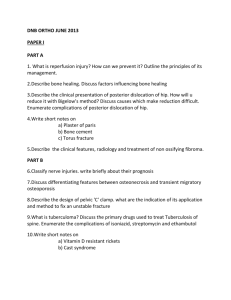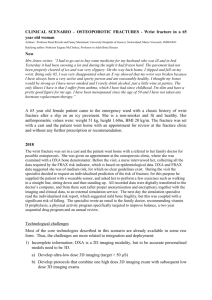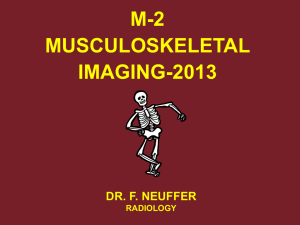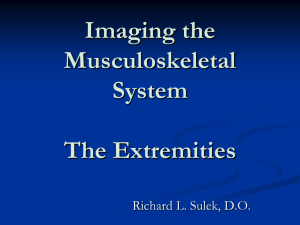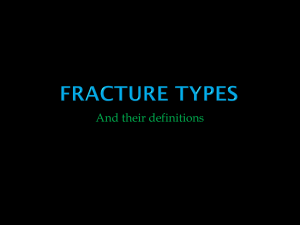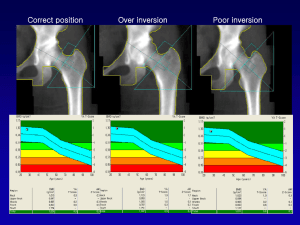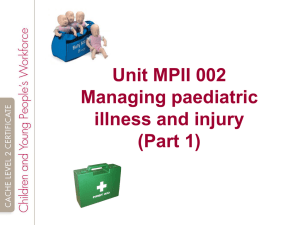Musculoskeletal Trauma: An Introduction
advertisement
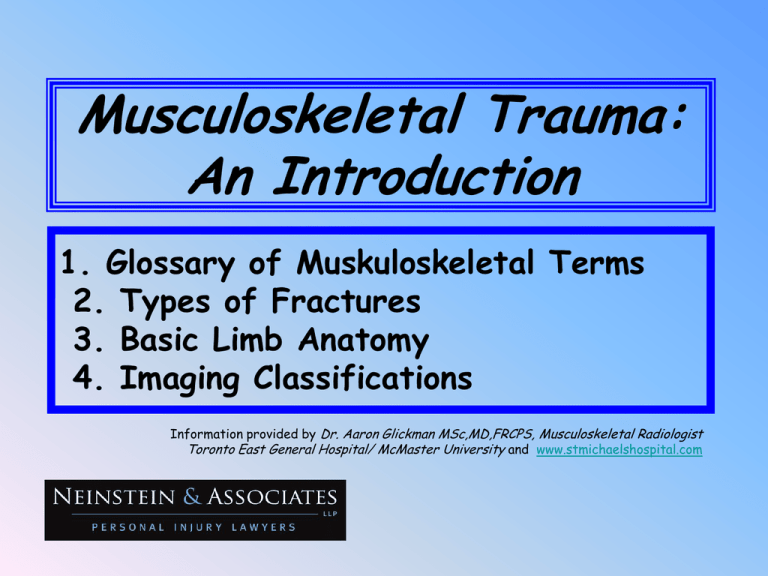
Musculoskeletal Trauma: An Introduction 1. Glossary of Muskuloskeletal Terms 2. Types of Fractures 3. Basic Limb Anatomy 4. Imaging Classifications Information provided by Dr. Aaron Glickman MSc,MD,FRCPS, Musculoskeletal Radiologist Toronto East General Hospital/ McMaster University and www.stmichaelshospital.com Medial: Towards the midline E.g.: The left eye is medial to the left ear Lateral: Away from the midline E.g.: The right ear is lateral to the right eye. Cranial: Towards head (cranium) E.g.: The chest is cranial to the feet. Caudal: Towards the feet E.g.: The knees are caudal to the shoulders. Proximal: Towards the body. Generally used for the limbs. E.g.: The elbow is proximal to the hand Distal: Away from the body. Generally used for the limbs. E.g.: The tibia is distal to the hip. A Few More Terms: Posterior: Superficial: Anterior: Deep: Behind/towards the back In front/towards the front of the body Superior: above towards the skin surface Away from (deep to) the skin surface Inferior: below Types of Fractures Comminuted Fracture • A fracture in which bone is broken, splintered or crushed into a number of pieces. • Easy to diagnose with an X-ray Open Fracture • • • • Also called Compound fracture Bone penetrates the skin Needs immediate attention & often surgery Caused by high-energy injuries such as slip & falls, motor vehicle accidents, workplace or sports injuries Closed Fracture • A broken bone that does not penetrate skin • Also called a Simple fracture • May not need surgery Multiple Fracture • the fracture of several bones at one time or from the same injury Spiral Fracture • Also called a Torsion fracture • At least one part of the bone has been twisted apart Greenstick Fracture • Classified as an incomplete break • One side of the fracture is broken & the other side is bent • Can take a long time to heal because they tend to occur in the middle, slower growing parts of bone. Basic Extremity (Limb) Anatomy Imaging Classifications • • • • • X-ray (plain film, general radiography) Ultrasound (US) Computed Tomography (CT) Magnetic Resonance Imaging (MRI, MR) Nuclear Medicine (Nucs, Bone Scan) X-ray • • • • Radiation sent through pt to film First line study for most medical issues Excellent for fractures/bony detail Very limited for soft tissues (ligaments, tendons, muscles) • Only a screening tool in the spine X-ray Report A lateral view of the ankle is provided in this image. All bone and joint markings are within normal limits. There is no evidence of fracture or dislocation and soft tissue planes are unremarkable. Ultrasound • • • • • • • Sound waves sent to pt and bounce back No radiation Highly effective with definite role Limited Soft tissues Very poor for bony and intra-articular Operator dependant • MSK work requires a specialist (vital!) Ultrasound of a Shoulder Computed Tomography (CT) • Fancy X-ray • Excellent for bony structural anatomy in the setting of complicated fracture • Less effective than MR for soft tissues and active processes • High radiation Dose CT of Foot Fracture Magnetic Resonance Imaging (MRI) • a non-invasive imaging technique that does not involve exposure to ionizing radiation • proven valuable in diagnosing a broad range of conditions, including cancer, heart disease and muscular and bone abnormalities. • MRI typically costs more and may take more time to perform than other imaging modalities MRI Scan of a Shoulder Nuclear Medicine (Nucs, Bone Scan) • procedures involves the injection of a radioactive phosphate tracer into a vein • Used to detect fracture or broken bones, causes of back pain, detect or follow incidence of cancer that spreads to the bones • More detailed than a plain x-ray Nuclear Medicine Bone Scan of a Pelvis



